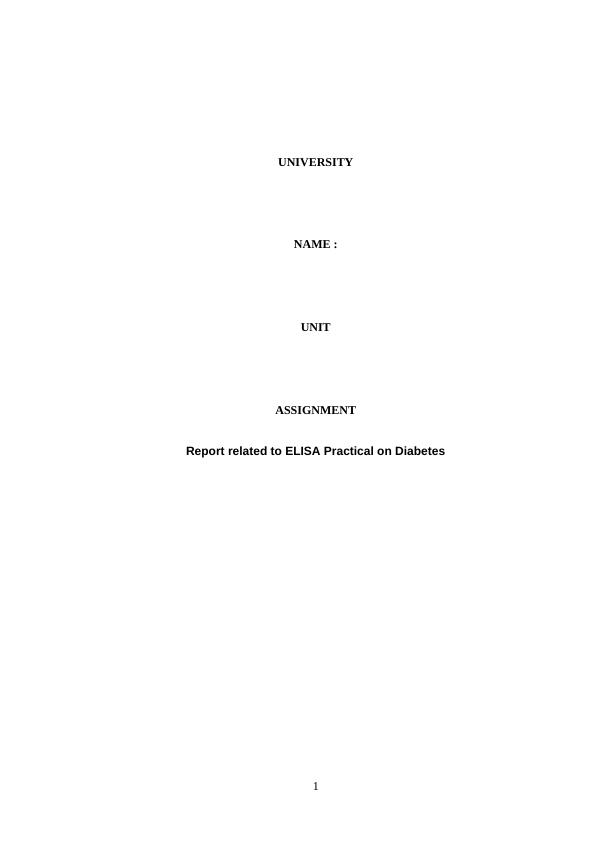ELISA Practical on Diabetes: Blood Sugar Elevation, Glucagon, Exercise, Glimepiride and Data Set Analysis
Answering questions related to a case study on diabetes and explaining the actions of insulin and glucagon on different tissues.
5 Pages1551 Words341 Views
Added on 2023-04-22
About This Document
This report covers ELISA Practical on Diabetes, including Blood Sugar Elevation, Glucagon, Exercise, Glimepiride and Data Set Analysis. It discusses the role of insulin, liver, and glucagon in blood sugar elevation, the role of exercise in controlling blood sugar levels, and the mechanisms of glimepiride in lowering fasting glucose level. It also includes a data set analysis and references.
ELISA Practical on Diabetes: Blood Sugar Elevation, Glucagon, Exercise, Glimepiride and Data Set Analysis
Answering questions related to a case study on diabetes and explaining the actions of insulin and glucagon on different tissues.
Added on 2023-04-22
ShareRelated Documents
End of preview
Want to access all the pages? Upload your documents or become a member.
Insulin and Glucagon Essay
|5
|794
|130
Assignment On Biochemistry
|4
|867
|22
The Role of Macronutrient Carbohydrates
|7
|1587
|317
Biochemistry. 1 Biochemistry by. Course: Tutor: Univers
|3
|389
|58
Endocrine Study For Human Assignment
|5
|737
|21
Diabetes: Anatomy, Physiology, Causes, Symptoms and Management
|9
|1720
|317


